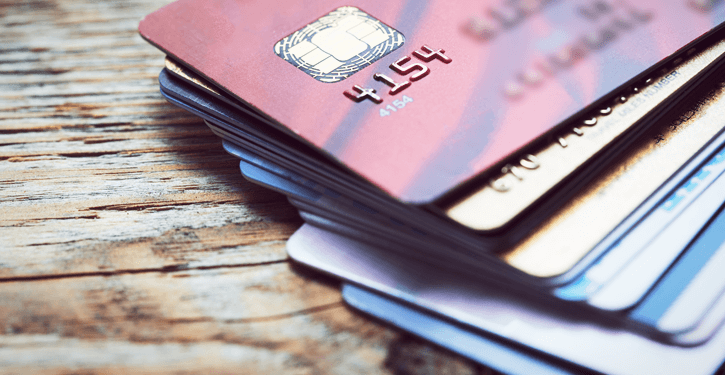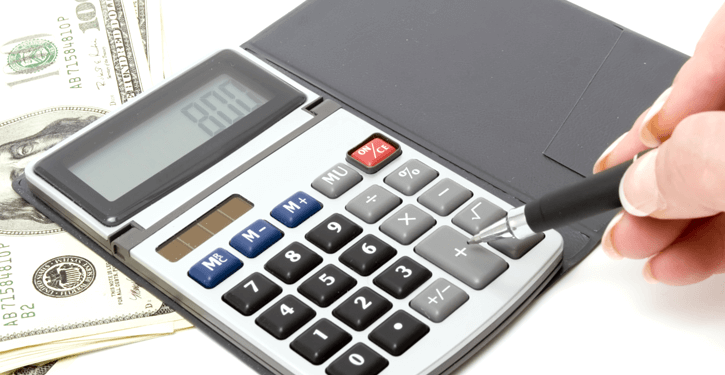Raise your hand if you’re heavily in debt, with little savings to boot!
Same here. I’m working hard to pay off $85,000 of debt while earning a less-than-stellar entry-level salary a couple of years post-graduation. It’s tough to save, to say the least!
I was tired of being broke all the time, living paycheck-to-paycheck while I barely made a dent in my debt despite sending in hundreds of dollars every month. I knew I needed to save up and pay off debt faster, so I developed a step-by-step strategy to achieve both.
I didn’t know if I’d be able to follow the plan, but it’s working. Since I started using this strategy I’ve completely broken free of the paycheck-to-paycheck cycle and I have more money in savings than ever before. Here’s how I did it.
Step One: Save Up One Month’s Expenses

The first step towards breaking the debt cycle is to make sure that you have money today.
When I started I had no money in savings and no clue about where my money went. I set up a successful budget that helped me put aside money each month until I had one month’s expenses saved up.
Now I begin each month with all the money I need already in the bank thanks to this savings account. As I go through each month I save up for next month’s expenses. I’m usually able to fully fund next month’s expenses by the 15th or the 20th of each month.
I wasn’t able to get ahead on my current income alone. I focused on developing well-paid side hustles like freelance writing and blogging, while my husband got a fun second job leading pub trivia on Saturday nights.
If you earn just enough money to cover your current expenses (or maybe not even that), the only way you can get ahead is to find a way to bring in more income.
Once I had a month’s worth of living expenses saved up, I had enough breathing room to focus on the next step.
Step Two: Pay Off Credit Card Debt
Credit card debt is just about the most expensive form of debt there is and could cost you thousands of extra dollars in interest. Make it a priority to get rid of it.
After I saved up enough for the upcoming month by the 15th or the 20th, all the remaining income for the month was applied to my existing credit card balances. I started with a balance of about $2,500 on my credit card, and completely paid it off within just a couple of months.
Step Three: Save Two More Months’ Living Expenses
Paying off the rest of my $85k debt will be a long slog, and I want to be sure I’m prepared for the inevitable emergencies that will pop up in the meantime.
I’m working to increase my savings to three months’ living expenses in an emergency fund. My husband and I are young and healthy, have no children and will soon be rid of a mortgage payment. We have few financial liabilities so we’re comfortable with this level of savings for now. When we take on more liabilities in the future, like another home, kids or a big move, we will set a higher minimum balance for our emergency savings.
I have about $500 saved towards an $8,000 goal, and once I hit that number, I’ll move to the next step.
Step Four: Pay Off Remaining Debt
Step four is to attack remaining debt and bump minimum payments up to higher levels once the savings account goal is funded. With enough money in savings to mitigate common financial emergencies, it’s time to work toward paying off the rest of the debt.
At this point, continue to pay next month’s expenses early, and once that quota is met, the extra income goes to all other debt.
I plan to use the debt avalanche method to pay off the rest of my debt. My attack plan is to line up my debts in order of highest-to-lowest interest rate and pay the most expensive debt off first.
My extra payments will go to the highest-interest debt until it is paid off. Then, those payments will be applied to the next-highest-debt (in addition to the minimum payment) until that one is paid off, ad infinitum until all debts are completely paid off. The key is to continue to pay at least the same amount each month, not less as each debt is paid off.
By knocking down my remaining debt in this fashion, I’ll shave years off of my debt and save thousands of dollars in interest payments.
Step Five: Save Up a Six-Month Emergency Fund
By now, I’ll be completely debt-free! But it isn’t time to give up just yet.
I’ll already have three month’s worth of living expenses saved up in the bank at the beginning of each month, which should protect me against most emergencies. But I want a little bit more protection than that. If I’ve learned anything in my 29 years of life, it’s that when things go wrong, they do so in a big way.
I want an emergency fund capable of sustaining me for up to six months, which should protect me against a short-term loss of income or a health emergency. Most long-term disability insurance benefits kick in after several months, so by keeping a six-month reserve in my emergency fund, I’ll have enough to hold me over until this policy kicks in. My savings account will be a self-funded short-term disability insurance policy.
Step into Debt-Free Life
Boosting savings while paying off debt is tough. You need a plan, tailored to your situation, to successfully achieve both objectives. This plan really didn’t take me much work to figure out—the most critical element to it is the need to stick to your family budget, which you should do anyway. Foresight and purposeful financial behaviors can lead me – or you – to debt-free life and money in the bank.

























